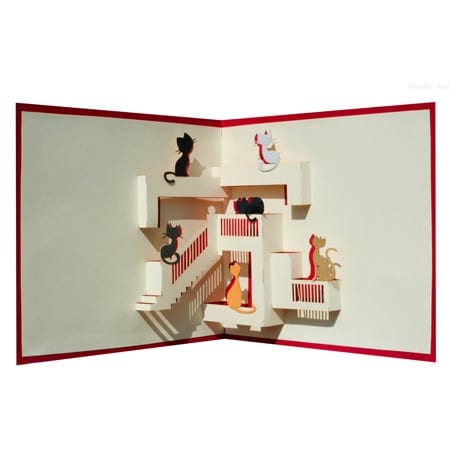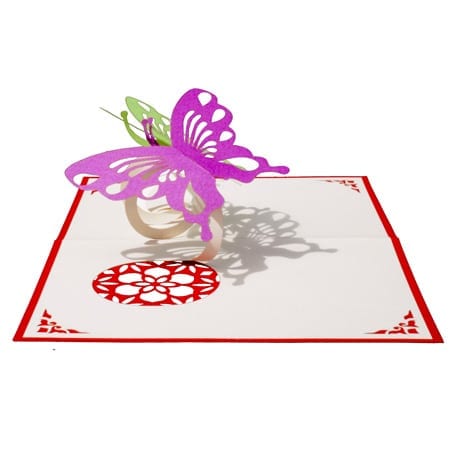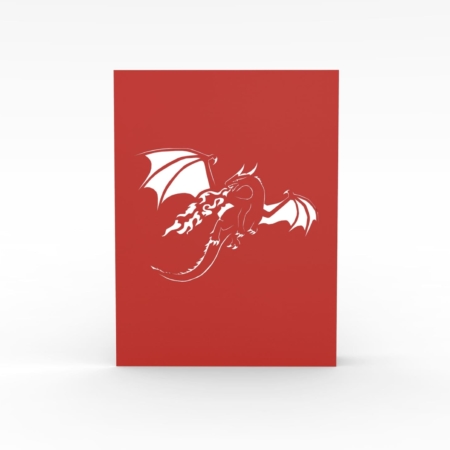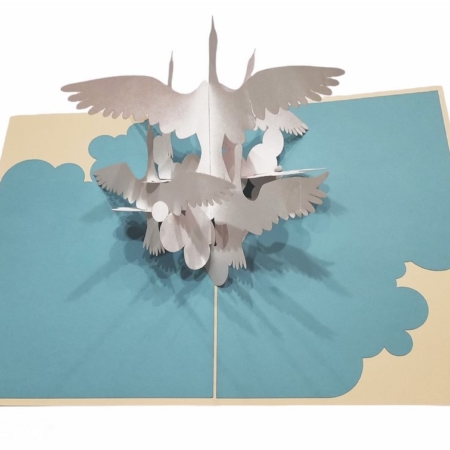Description
The red-crowned Japanese crane is among the rarest cranes in the world. It is a symbol of luck, longevity, and fidelity.
The light blue cover of this card shows a graceful crane in flight, with a backdrop of the full moon and cherry trees. Open the card to a spectacular 3-D red-crowned Japanese crane with outstretched wings on a bed of billowing clouds.
This is a card for an engagement, a wedding, an anniversary, to celebrate a long friendship, a birthday.
Symbolism:
In Japan, the crane is a mystical creature believed to live for a thousand years. As a result, in the Japanese, Chinese and Korean culture, the crane represents good fortune and longevity. The Japanese refer to the crane as the “bird of happiness.”
Adult red-crowned cranes are named for a patch of red bare skin on the crown, which becomes brighter during mating season.
Cranes are symbols of love, happiness, martial fidelity and longevity in east Asia. They are common motifs on kimonos, scrolls, screens, porcelain, lacquerware, bronze mirrors and a popular brand of playing cards. Cranes also appear in Russian folk songs, ancient Egyptian tombs, Greek myths, Australian aboriginal dances, and prehistoric European cave art.
The red-crowned crane is everywhere in Japan:
The Japanese have written the red-crowned Japanese crane into poems and folktales and myths. They have painted it and made statues and sculptures to it. From its habits they have drawn phrases and metaphors to describe their own behavior. They have imitated it and tried to dance as it dances. They have named streets and cities after it. They have folded it into tiny birds of paper and hung them carefully in colored festoons at temples and shrines. They have made it into an icon and put its image everywhere, so this extremely rare bird is, ironically, seen throughout Japan.
The 17th century Japanese poet Basho wrote the following haiku:
Cool seascape with cranes
Wading long-legged in the pools
Amid the tideway dunes.
Elegance:
Cranes are the tallest and most elegant of all flying birds. They are known best for their unwavering faithfulness to mates, spectacular courtship displays, large size, long migrations and loud calls. Many species can reach a height of five feet within a year after they are born. Some of them have long life spans. One Siberian crane is known to have lived for 83 years.
The Vietnamese believe cranes cart our souls up to heaven on their wings.
Japanese cranes mate for life. In the mating season, males do a ritual dance in which they bow their heads and flap their wings and leap up and down with their wings outstretched. Mating takes place two or three times a day and continues well into the nesting season.

































